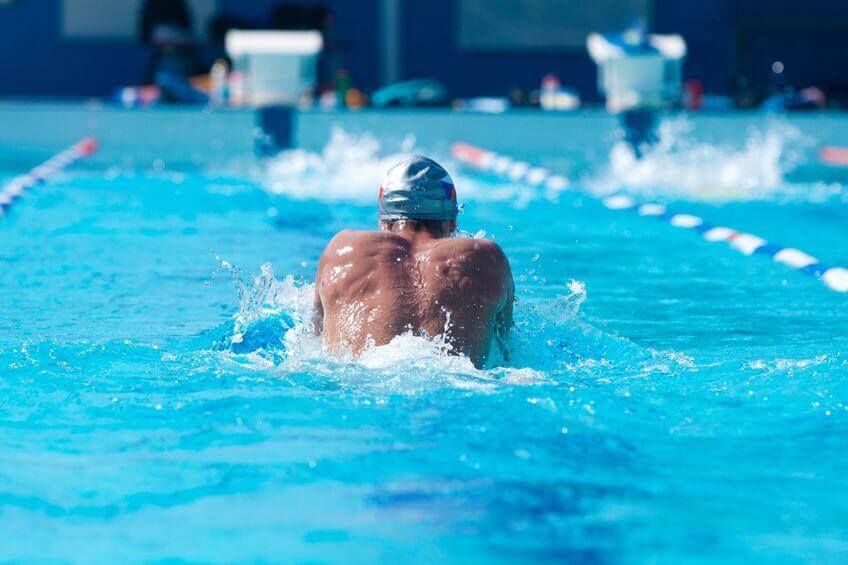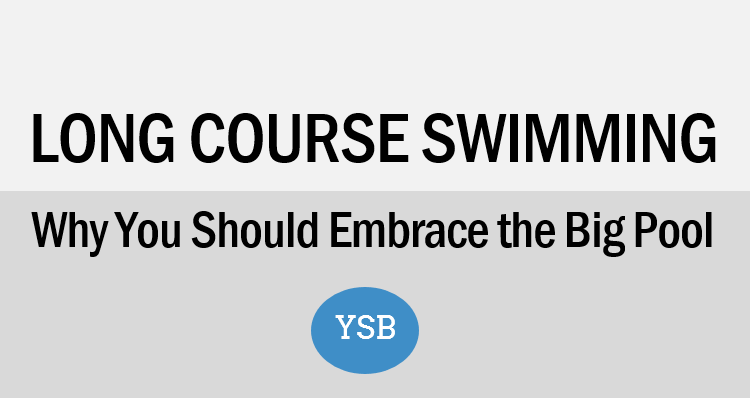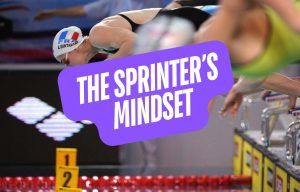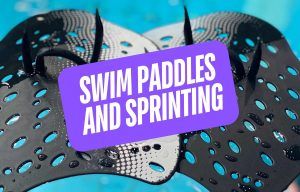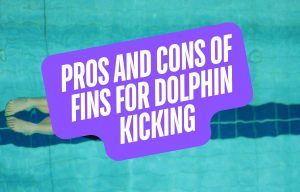Does long course swimming make a difference? Here is why you should make more of an effort to spend some quality time with your local long course pool.
I remember the first time I swam long course very vividly. Junior Olympics, somewhere inland New Jersey, a bright summer day in 1988.
The event? 100m backstroke, and the second lap of that race was probably the longest three-quarters-of-a-minute of my life.
With no roof above me to guide my swimming, I bounced from lane rope to lane rope, rolling over on my side numerous times to look for the wall, unbelieving that I still hadn’t even seen the backstroke flags.
Where were they?
By the time I touched the wall I felt like I’d swum a marathon.
“Welcome to the big boy pool,” a coach told me as I dragged myself out of the pool.
At the highest level our sport’s athletes swim at in the long course pool, and yet, when you mention to most age group athletes that practice will be in the 50m pool you tend to get groans.
Yes, it’s harder. Yes, it requires more stamina. But yes, it will make you a better swimmer.
For those swim teams and swimmers that are lucky enough to have access to a long course pool, here is why.
The Benefits of Long Course Swimming
Conditioning.
The biggie: long course swimming is straight-up tougher. You don’t need me to tell you that.
For swimmers going from short course yards to long course meters the difference is even more profound. Without the walls to save you every dozenish or so strokes it forces you to maintain the rhythm, stroke length and stroke rate over more than double the distance.
When swimmers performed a descending set of 5×200’s in both a short course and a long course pool, blood lactate levels were significantly higher among the long course group, and during the sub-max efforts heart rate was higher as in the long course pool as well. (Heart rates after the final max efforts were identical between short and long course.)
If there was ever an advantage for swimming long course it is this: you’ll become more accustomed to training with higher blood lactate levels, and getting a harder workout in swimming at the same intensity as you would be swimming short course, making it ideal for aerobic work.
Trains you for the big races.
If you have aspirations of competing at the elite level of the sport at some point you will be racing in the long pool.
This is unavoidable. Although training long course certainly isn’t a prerequisite of fast swimming—an example including backstroke great Aaron Piersol is detailed below—training long course can give you the confidence to swim fast.
Here’s another way to think about long course swimming, the 50m pool is also the same one that the Olympics are competed at. If you want to swim against the Franklins, the Lochtes, and the Campbells, eventually you are going to have to step into the same pool they race in.
Exposes the weaknesses in your technique.
Short course swimming can help paper over technique flaws. When you have strong walls and underwaters you can hide the soft spots in your swimming with long underwaters.
Consider that short course races can be performed up to 60% using underwater dolphin kicks, and you realize that the importance of swimming technique is diminished in the small pool compared to the long pool where only up to 30% of the race can be swum underwater.
Butterfly races in particular get a whole lot tougher when the amount of arm-saving turns gets cut in half.
Gives you more time to really work on stroke corrections.
Long course swimming gives you longer opportunities to hold on to desired stroke corrections.
I have always found that when trying to make stroke adjustments it requires a few stroke cycles to get into the rhythm of it. Whether it is doing regular old swimming or dropping some freestyle drills having the added length of the pool means that you latch onto the adjustment, and have a chance to drill it down a few times before you have to launch yourself into a flip-turn.
A shortcoming of short course swimming is that seemingly a couple moments after you hit the rhythm and technique you want it is time to turn, forcing you to start over after another push off and streamline.
It’s a new challenge.
For most swim programs the long course training and racing season comes after six months of short course swimming. Switching to the big pool is an easy way to switch things up.
Racing long course is different, and requires different strategy.
Gives ya a piece of humble pie with your times.
Simply put, long course is slower.
For swimmers new to the sport there is a moment of surprise when they come to understand that a :22 second short course swim doesn’t instantly transfer over to a :22 second-long course result.
In a long course pool there is quite literally more swimming to be done.
More pool space.
And now, probably my favorite aspect of long course training.
Space!
10 swimmers in a short course lane is a bubbling cauldron of arms and legs; the same ten swimmers in a long course lane suddenly feels like you have all the space in the world.
In most programs long course training is often available only during early morning workouts due to pool space limitations later in the day, so if there was ever a reason to get your butt out of bed for morning workout it’s that you will get in better shape, improve your technique, and be able to spread your (water) wings.
How to Train Long Course in a Short Course Pool
Okay, so what if we don’t have access to an Olympic-sized swimming pool?
First off, the good news is that not having access to a long course pool isn’t a game breaker.
There are benefits to short course swimming; the shorter bouts of swimming means you hold onto that technique a little bit longer, you get twice the work on turns/breakouts, and a short course pool works better for training sprinters.
Secondly, not only can you swim well without a long course pool, but you can excel, even at the highest levels.
Aaron Peirsol, an American who held the world record in both the 100 and 200m backstroke, and is a 7-time Olympic medalist, broke his first world record in 2002 after training the previous 8 months without having even looked at a long course pool.
So it’s not a deal-breaker.
Here are a couple ways to make the pool a little longer:
- Add some resistance. There are lots of ways to lengthen the pool. Swim with a parachute. Tether yourself to a cord. Throw some DragSox onto your feet. From personal experience I can tell you that the first time you put them on and try and kick the length of the pool the resistance will double the amount of time it takes to get there. A :20 second 25m kick turns into a :45-50 second effort. Bingo.
- Turn at the “T’s.” A low-tech way to add the endurance benefits of training long course is to simply remove turns from the equation. This means that doing a flip-turn a meter or two from the wall, kicking from a dead stop, and continuing on with your swimming. Training this way robs you of the push-offs and breakouts you’d typically lean on to recover.
Lots of great swimmers have come up training in facilities that are, well, dismal, so don’t feel like having long course swimming consistently at your disposal is a game-breaker.
Whether your pool is long course, short course or just a bucket in the ground, remember it’s the swimmer that makes the pool, not the other way around.

